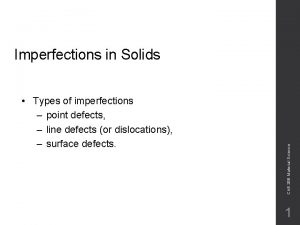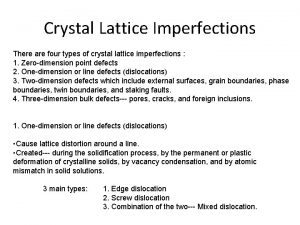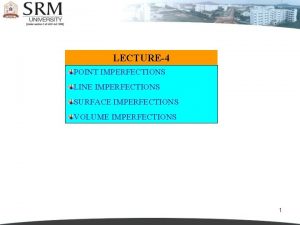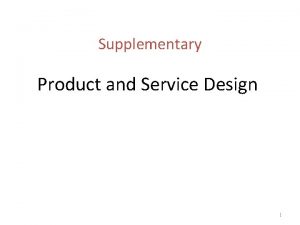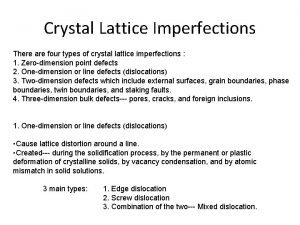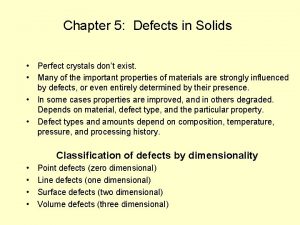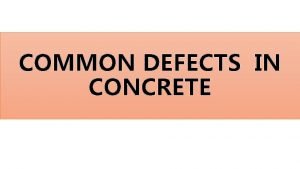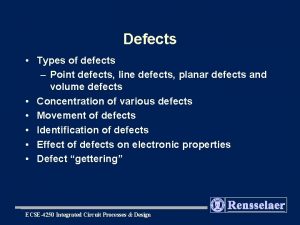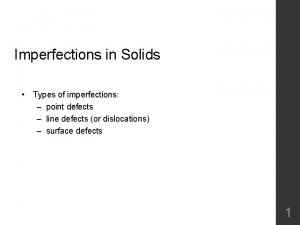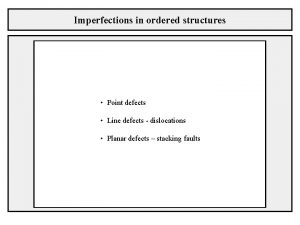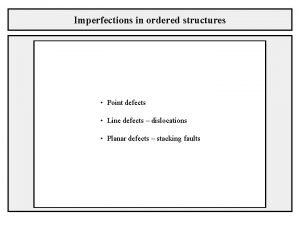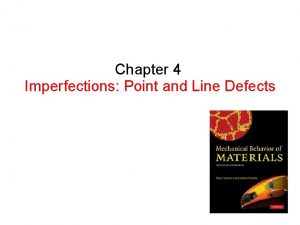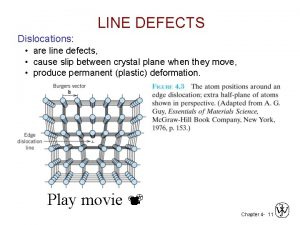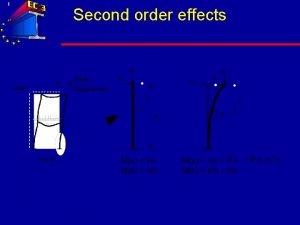Types of imperfections point defects line defects or










- Slides: 10

• Types of imperfections – point defects, – line defects (or dislocations), – surface defects. Ch. E 266 Material Science Imperfections in Solids 1

Significance of Dislocations • Plastic deformation is defined as a irreversible deformation or change in shape that occurs when the force or stress is removed. • Permanent deformation which is caused by dislocation motion. • Elastic deformation is a deformation that is fully recovered when the stress is removed. • Temporary change in the shape • No dislocation motion • Dislocation density is defined as the ratio of the total length of dislocation line and volume of the material. 2

Significance of Dislocations • Slip in Metals • Plastic deformation in metals: Slip plane is defined as sliding of blocks of the crystal over one another along the definite crystallographic plane. • Slip plane is the plane with the greatest atomic density • Slip direction is the closest-packed direction within the slip plane • Slip = Specific direction + Certain planes • Slip system = Slip plane + Slip direction • Limited slip system causes low ductility in the material • Higher stresses are required to cause slip • Slip occurs by dislocation motion in the crystals 3

Significance of Dislocations • Slip in Single Crystals; Extent of slip depends on: • Geometry of crystal structure • Magnitude of shear stress • Orientation of slip plane • Schimid’s Law Normal stress Normal to Slip plane Slip direction A Resolved shear stress Ao 4

Significance of Dislocations Normal stress Normal to Slip plane Slip direction A Resolved shear stress Ao 5

Slip by Dislocation Motion a (distance between slip planes) w 6

Slip by Dislocation Motion • A screw dislocation may move by slip or glide any direction perpendicular to itself, but edge dislocation can only glide in its slip plane. Edge Dislocation b Screw Dislocation b • Climb of edge dislocation involve motion in a direction perpendicular to slip plane. 7

Surface Defects • Boundaries or planes separate a material into regions • Same crystal structure with different orientation • MATERIAL SURFACES • disruption in atomic stacking • minimization of surface areas decreases the surface energy of the system • GRAIN BOUNDARIES • A grain boundary is a highly defective, relatively open region where impurities prone to segregate. 8

Importance of Defects have a importance in affecting the materials properties (mechanical, electrical, optical and magnetic). • Effect on Mechanical Properties by Controlling the Slip Process • Strain Hardening • Annealing • Solid-Solution Strengthening • Introducing substitutional or interstitial atoms • Grain-Size Strengthening • Second phase strengthening • Precipitation strengthening 9

References Donald R. Askeland, Pradeep P. Fulay, Wendelin J. Wright, The Science and Engineering of Materials, Sixth Edition William D. Callister, David G. Rethwisch, Materials Science and Engineering, Eighth Edition, Wiley, 2011. 10
